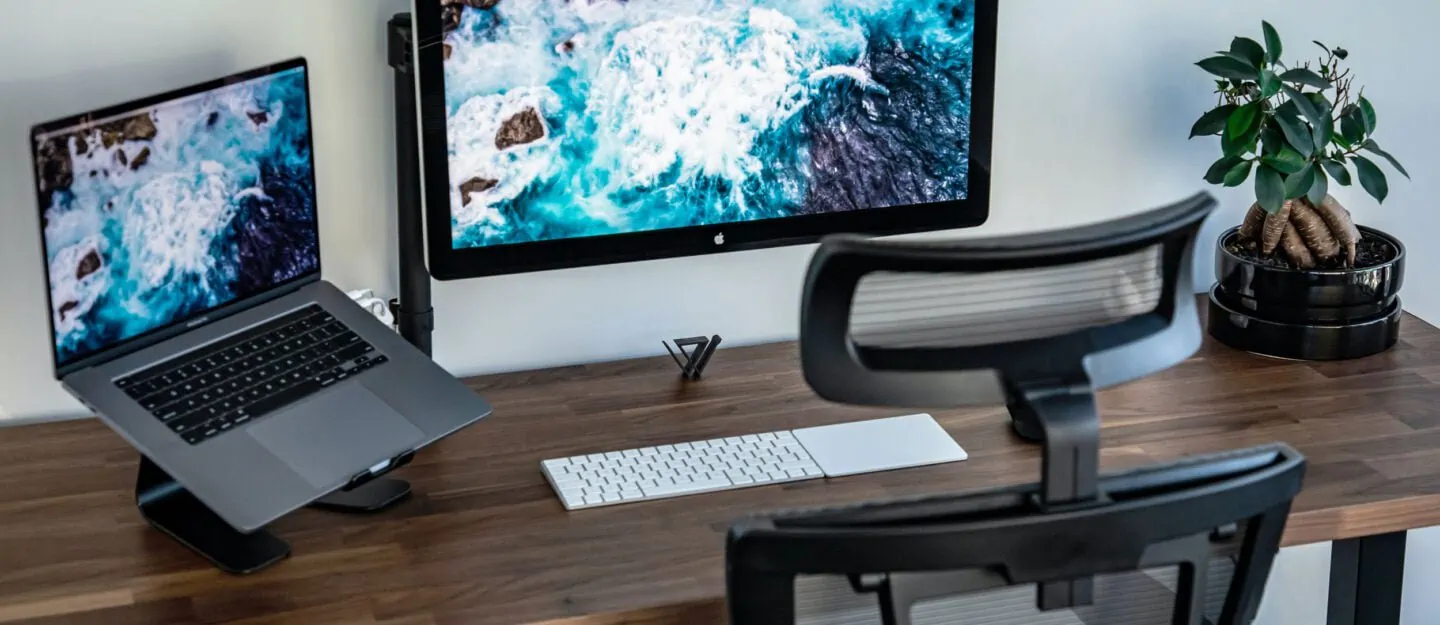

Within a very short time, the daily commute to the office was replaced by flexible and location-independent working. Mobile working, home office, teleworking and the cloud have become natural parts of our working world. This still poses a number of challenges: Until the home office becomes a truly natural part of teams, communication with customers and interaction with service providers, it won’t really work smoothly.
Equipment as a Foundation
Working mobile with remote work software does not mean being comfortable on the sofa at home; on the contrary, it means being at least as well or better equipped than in the office. For this you need the following equipment:
- A workplace where you can set up your work equipment ergonomically.
- A height-adjustable chair.
- A workplace where you can also “close the door” from time to time.
- A stable internet connection.
- A VPN connection that allows you to ensure secure communication between your computer at home and the servers in your company.
- Up-to-date antivirus software and operating system.
- If necessary, a monitor that you use in addition to your laptop.
- If necessary, a printer.
39 percent of employees work just as productively in the home office as in the business' office.
The biggest challenge when working in virtual teams, and thus in the home office, is not decreasing productivity, but rather the maintenance of communication within the teams. In terms of productivity, an OTRS Group survey showed that 39 percent of employees work just as productively in the home office as in the business’ office. A full 43 percent even say that they are more productive from home than in the office.
The survey results also show that the greatest challenge lies in communication. This is because 23 percent of those surveyed see the greatest risk in foregoing personal meetings. Despite this, 41 percent would like to be able to work completely remotely, while 40 percent prefer a mixture of in-office and home office days.
Communication as a Key and a Challenge
1. Keep your team up-to-date: Concentrate on and log your communication.
First and foremost, network with your teammates regularly. There are countless tools that can help you do this. OTRS is one of them. OTRS ensures that team members do not lose touch with each other throughout the working day. General topics, tasks or projects can be placed in a ticket where other colleagues can be involved at any time.
To prevent misunderstandings or to clarify questions, it is possible to see within a ticket who has been involved. With a ticket, you have the choice between using a classic e-mail, an internal note or other communication channels to share updates. Especially with notes, you promote cooperation and keep your team on the same level of knowledge.
Even small workflows, such as vacation requests, must be digitized. Access to available resources or colleagues is essential, especially for project planning and meetings.
2. Know who is available, when and how, even if you can’t ask.
If a team is completely virtual, it is no longer possible to quickly visit a colleague in the neighboring office. Therefore, even small workflows, such as vacation requests, must be digitized. Access to available resources or colleagues is essential, especially for project planning and meetings. By using the out-of-office function or the OTRS calendar, it is possible to see who is available, on vacation or out sick at any time, throughout the company. At the same time, appointments for meetings or field service assignments can be set immediately because of the calendar.
OTRS offers a chat function to counteract the lack of conversation in the office corridor. Colleagues are displayed as online or offline and can be chatted with. If a to-do occurs during the chat, the chat can be converted into a new ticket or added to an existing one with a single mouse click.
3. Communicate how you want.
OTRS is designed to give your employees the flexibility to decide which device they want to use to stay in touch with their colleagues – whether it’s a smartphone, laptop or desktop with 49″ monitor. OTRS is browser-based and therefore requires no installation of the software on end devices. This gives your employees the freedom to choose between different ways of working. And, there’s never a worry about security because with OTRS employees have complete communication in one place, protected by a password policy, single sign-on and two-factor authentication. Additionally, the environment is more secure since sensitive company data does not have to be permanently stored locally.
Let’s briefly summarize our best practices again:
First of all, an optimally equipped workstation is the be-all and end-all. A quiet, ergonomic and technically well-equipped workplace at home makes work much easier.
Second, OTRS notes, chat functions and tickets help your team stay in constant communication with each other, as well as with customers and service providers. Third, resource management becomes child’s play thanks to the OTRS company-wide calendar. And fourth, all of your employees are independent of their work equipment, because OTRS works in the cloud.
“We find ourselves in an increasingly digitalized world. This brings with it many advantages but also risks, especially when employees work from their home office on a long-term basis,” says Sabine Riedel, member of the Executive Board of OTRS AG and expert for digital transformation. “Providing tools that support the communication that employees are used to from their everyday office life is an effective measure for maintaining productivity, but also for the long-term successful development of the company.
If you would like to learn more about the benefits of OTRS remote work software, our sales professionals will offer you a customized demonstration.
Categories
- About OTRS Group (21)
- Automation (3)
- Corporate Security (26)
- Customer Service (30)
- Developing a Corporate Culture (12)
- Digital Transformation (54)
- General (86)
- ITSM (36)
- Leadership (22)
- OTRS in Action (8)
- Processes (5)
- Using OTRS (15)
